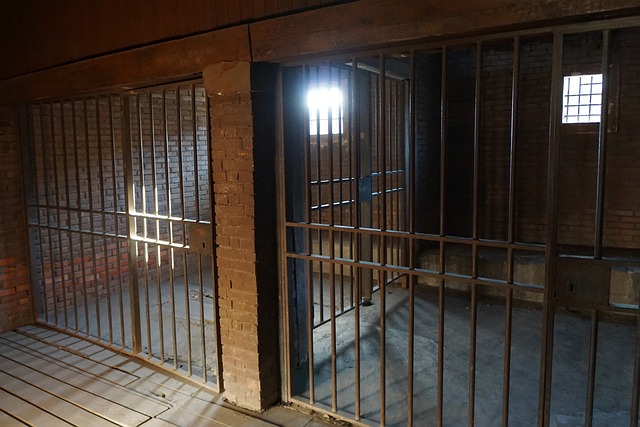Rural communities face distinct DUI prevention challenges due to lower population densities and reduced traffic volumes. As a result, their DUI laws often include lighter penalties like fines and community service. To combat this, tailored strategies focus on increased visibility through patrolling and educational campaigns. Urban areas, with higher densities, rely on comprehensive enforcement like sobriety checkpoints and robust public transport. In rural settings, innovative solutions are needed to address limited resources, longer response times, and lack of transportation options. A collaborative approach involving community engagement, business partnerships, and targeted educational events is crucial for effective Rural Community DUI Prevention.
In the realm of DUI laws, a stark contrast exists between rural and urban areas. While urban centers grapple with high population densities and bustling streets, rural regions face unique challenges, from low population numbers to limited access to resources. This article delves into the key differences between rural and urban DUI regulations, exploring how population density impacts penalties and investigating strategies for effective community education in rural settings. We also analyze data-driven perspectives on arrest rates, shedding light on the diverse approaches needed for successful Rural Community DUI Prevention.
- Understanding Rural and Urban DUI Laws: Key Differences
- Impact of Population Density on DUI Penalties
- Challenges in Enforcing DUI Prevention Measures in Rural Areas
- Strategies for Effective Rural Community DUI Education
- Comparing Urban and Rural DUI Arrest Rates: A Data-Driven Perspective
Understanding Rural and Urban DUI Laws: Key Differences

In rural areas, DUI laws often reflect the unique challenges faced by communities where low population densities can make enforcement more difficult. Consequently, rural DUI prevention strategies may focus on increased visibility and patrolling to deter potential drivers under the influence. These regions might also implement educational campaigns tailored to their demographics, emphasizing the impact of drinking and driving in smaller, tightly-knit societies.
In contrast, urban settings present distinct challenges with higher traffic volumes, congestion, and a more diverse population. Urban DUI laws typically prioritize comprehensive enforcement strategies, including sobriety checkpoints, advanced technology for driver testing, and robust public transportation alternatives. These measures aim to reduce the overall drinking and driving risk in densely populated areas where a single incident can have significant repercussions on various individuals and communities.
Impact of Population Density on DUI Penalties

In rural communities, where lower population densities are the norm, DUI (Driving Under the Influence) laws often reflect this unique environment. Penalties for impaired driving may differ significantly from urban areas due to several factors related to population density. One key aspect is the reduced risk of accidents in less densely populated regions, which can lead to more lenient sentencing guidelines. This lower risk is often attributed to fewer vehicles and pedestrians on the roads, resulting in less crowded driving conditions.
As a result, rural DUI offenses might carry lighter fines, shorter license suspensions, or even alternative sentences like community service or education programs. These variations aim to balance the need for public safety with the distinct characteristics of rural living. However, it’s essential to note that these differences don’t diminish the severity of drunk driving; instead, they reflect an attempt to tailor legal consequences to match the specific challenges and demographics of each region, focusing on effective Rural Community DUI Prevention strategies.
Challenges in Enforcing DUI Prevention Measures in Rural Areas

Enforcing DUI prevention measures in rural areas presents unique challenges that differ significantly from urban settings. With lower population densities, law enforcement agencies often have fewer resources and personnel to dedicate to proactive DUI patrols. This scarcity can result in longer response times for police, making it harder to catch impaired drivers before they cause harm. Additionally, rural communities may lack the concentrated public transportation options and ride-sharing services that are prevalent in urban areas, forcing potential impaired drivers to rely on their own vehicles.
The widespread and often uninhibited nature of rural landscapes can also make it more difficult for law enforcement to identify high-risk zones and implement targeted strategies. Unlike bustling urban neighborhoods with consistent foot traffic, rural areas experience fluctuations in population movement, making it challenging to establish reliable patterns for identifying recurring DUI issues. These factors combine to create a complex environment where effective DUI prevention requires innovative solutions tailored to the specific needs and characteristics of each rural community.
Strategies for Effective Rural Community DUI Education

In rural communities, where populations are often more spread out and law enforcement resources may be limited, effective DUI prevention strategies require tailored approaches. Community involvement is key; hosting educational events like workshops, presentations, and town halls can raise awareness about DUI risks and promote responsible drinking behaviors. Utilizing local influencers, such as community leaders, teachers, and popular figures, to spread the message can increase engagement and impact. Additionally, leveraging social media platforms designed for rural audiences can help reach a wider, more diverse group of individuals.
Partnerships with local businesses, like bars and restaurants, are also valuable assets. Implementing responsible serving practices, such as training staff to recognize signs of intoxication and promoting designated driver options, can significantly reduce impaired driving incidents. Encouraging community members to become involved in these initiatives fosters a sense of shared responsibility, making rural DUI prevention efforts more effective and sustainable over time.
Comparing Urban and Rural DUI Arrest Rates: A Data-Driven Perspective

In urban areas, with their high population densities and bustling streets, DUI (Driving Under the Influence) arrest rates tend to be higher. This is often attributed to increased traffic volume, more frequent law enforcement presence, and a wider range of alcohol-related social activities. Conversely, rural communities, despite lower overall drunk driving incidents, face unique challenges in DUI prevention due to factors like reduced police patrols and limited access to transportation alternatives.
Data reveals disparities in arrest rates between urban and rural settings, with urban areas consistently reporting higher percentages. This doesn’t negate the significance of Rural Community DUI Prevention efforts; rather, it highlights the need for tailored strategies. By understanding these differences, policymakers and community leaders can design more effective programs that address the specific needs and challenges of their regions, ultimately aiming to reduce drunk driving incidents across all environments.
In conclusion, the disparities between rural and urban DUI laws highlight the need for tailored community prevention strategies. While urban areas benefit from denser populations facilitating stricter enforcement, rural communities face unique challenges that necessitate innovative educational approaches. By understanding these differences, policymakers and advocates can better address Rural Community DUI Prevention, ultimately reducing alcohol-impaired driving across diverse landscapes. Data-driven insights emphasize the importance of adapting strategies to local contexts for maximum impact.






